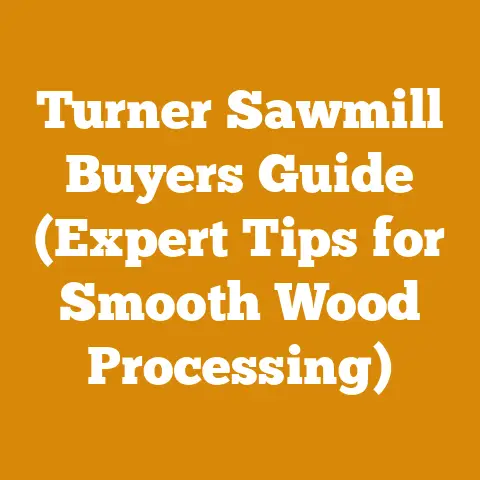1×8 Siding Finishes (5 Expert Tips for Doug Fir Interiors)
1×8 Siding Finishes: 5 Expert Tips for Doug Fir Interiors
Understanding Doug Fir and Its Finishing Challenges
Doug Fir is a softwood known for its straight grain, reddish-brown color, and relatively low cost. It’s readily available in most regions, making it a popular choice for siding and interior paneling. However, Doug Fir presents some unique finishing challenges.
- Softness: As a softwood, Doug Fir is more susceptible to dents and scratches than hardwoods like oak or maple. This means the finish needs to provide adequate protection against everyday wear and tear.
- Porosity: Doug Fir is relatively porous, meaning it absorbs finishes readily. This can lead to uneven color penetration and require multiple coats to achieve the desired look.
- Grain Raise: Water-based finishes can cause the grain to raise, creating a rough surface. This is especially noticeable on Doug Fir.
- Knot Bleed: Knots in Doug Fir can sometimes bleed resin, which can discolor the finish.
Understanding these challenges is crucial for selecting the right finishing products and techniques.
Tip #1: Proper Surface Preparation is Paramount
Before applying any finish, meticulous surface preparation is essential. This is where I’ve seen many projects go awry, leading to wasted time and money. Think of it like this: the finish is only as good as the surface it’s applied to.
Sanding:
Start with 80-grit sandpaper to remove any imperfections, such as mill marks or splinters. Gradually work your way up to 120-grit, then 180-grit, and finally 220-grit for a smooth, even surface. I always recommend sanding with the grain to avoid cross-grain scratches, which can be difficult to remove.
- Cost Consideration: Sandpaper costs can add up, especially if you’re working on a large area. Expect to spend around \$10-\$20 per pack of sandpaper (various grits). A good orbital sander can be rented for about \$30-\$50 per day.
Cleaning:
After sanding, thoroughly remove all dust with a vacuum cleaner and a tack cloth. Dust particles can interfere with the finish, creating a bumpy or uneven surface. I sometimes use a slightly damp cloth to pick up any remaining dust, but be sure to let the wood dry completely before applying the finish.
Addressing Knot Bleed:
If you notice any knots that are bleeding resin, you’ll need to seal them with a shellac-based primer. This will prevent the resin from discoloring the finish. I’ve found that Zinsser B-I-N Shellac-Based Primer works well for this purpose.
- Cost Consideration: A quart of shellac-based primer costs around \$20-\$30.
My Personal Experience:
I once worked on a project where I was finishing a large Doug Fir accent wall. I rushed the sanding process, and the finish ended up looking uneven and patchy. I had to re-sand the entire wall and start over. This taught me the importance of taking my time and paying attention to detail during surface preparation.
Tip #2: Choosing the Right Finish for Doug Fir Interiors
Selecting the right finish is critical for achieving the desired look and protection. Here are some popular options for Doug Fir interiors:
Water-Based Polyurethane:
Water-based polyurethane is a durable and low-VOC option that provides excellent protection against scratches and moisture. It’s also easy to apply and dries quickly. However, it can sometimes raise the grain of Doug Fir, so it’s essential to apply a pre-stain wood conditioner.
- Cost Consideration: A gallon of water-based polyurethane costs around \$40-\$60. Pre-stain wood conditioner costs around \$20-\$30 per quart.
Oil-Based Polyurethane:
Oil-based polyurethane is a classic choice that provides a warm, amber hue and excellent durability. However, it has a strong odor and takes longer to dry than water-based polyurethane. It also yellows over time, which can be desirable for some but not for others.
- Cost Consideration: A gallon of oil-based polyurethane costs around \$30-\$50.
Penetrating Oil Finishes (e.g., Tung Oil, Linseed Oil):
Penetrating oil finishes soak into the wood, enhancing its natural beauty and providing a soft, matte finish. They’re easy to apply and repair, but they offer less protection against scratches and moisture than polyurethane.
- Cost Consideration: A quart of tung oil or linseed oil costs around \$20-\$40.
Wax Finishes:
Wax finishes provide a beautiful, natural look and feel. They’re easy to apply and maintain, but they offer minimal protection against scratches and moisture. They’re best suited for low-traffic areas.
- Cost Consideration: A can of wax finish costs around \$15-\$25.
My Recommendation:
For most interior applications, I recommend water-based polyurethane. It provides a good balance of durability, ease of use, and low VOCs. However, if you’re looking for a more traditional look and don’t mind the strong odor and longer drying time, oil-based polyurethane is a good option.
Data Point:
According to a survey conducted by the National Wood Flooring Association (NWFA), water-based finishes are the most popular choice for residential wood flooring, accounting for over 60% of the market share. This trend is also reflected in the popularity of water-based finishes for interior siding.
Tip #3: Mastering the Application Technique
The application technique is just as important as the choice of finish. Here are some tips for achieving a professional-looking finish:
Applying a Pre-Stain Wood Conditioner:
If you’re using a water-based finish, apply a pre-stain wood conditioner to help prevent blotching and uneven color penetration. Apply the conditioner evenly with a brush or rag, and let it soak in for 15-20 minutes before wiping off the excess.
Applying the Finish:
Apply the finish in thin, even coats, following the grain of the wood. Use a high-quality brush or a foam applicator for best results. Avoid applying too much finish at once, as this can lead to drips and runs.
Sanding Between Coats:
Lightly sand between coats with 220-grit sandpaper to remove any imperfections and create a smooth surface for the next coat. Be sure to remove all dust before applying the next coat.
Number of Coats:
Apply at least two coats of finish for adequate protection. For high-traffic areas, consider applying three or even four coats.
Drying Time:
Allow each coat to dry completely before applying the next coat. Follow the manufacturer’s instructions for drying time.
My Personal Trick:
I always use a tack cloth to remove any dust particles before applying each coat of finish. This helps to ensure a smooth, flawless finish. I also like to use a foam applicator for applying water-based polyurethane, as it helps to minimize brush marks.
Cost Considerations:
- Brushes: High-quality brushes can cost anywhere from \$10-\$30 each.
- Foam Applicators: Foam applicators are relatively inexpensive, costing around \$5-\$10 for a pack of several.
- Tack Cloths: Tack cloths are also inexpensive, costing around \$5-\$10 for a pack of several.
Tip #4: Highlighting the Natural Beauty of Doug Fir
Doug Fir has a beautiful grain pattern and warm color that can be enhanced with the right finishing techniques. Here are some tips for highlighting the natural beauty of Doug Fir:
Using a Clear Finish:
A clear finish will allow the natural color and grain of the wood to shine through. Water-based polyurethane is a good option for a clear finish.
Applying a Stain:
If you want to add a touch of color to the wood, consider using a stain. Choose a stain that complements the natural color of Doug Fir, such as a light brown or amber.
- Cost Consideration: A quart of stain costs around \$15-\$25.
Using a Wood Grain Enhancer:
A wood grain enhancer can help to bring out the natural grain pattern of Doug Fir. Apply the enhancer before applying the finish.
- Cost Consideration: A quart of wood grain enhancer costs around \$20-\$30.
My Preferred Method:
I personally prefer to use a clear finish on Doug Fir to showcase its natural beauty. However, if I’m working on a project where the client wants a specific color, I’ll use a stain. I always test the stain on a scrap piece of wood before applying it to the entire project to ensure that I like the color.
Case Study:
I recently worked on a project where I was finishing a Doug Fir ceiling in a living room. The client wanted a natural, rustic look. I used a clear water-based polyurethane to protect the wood while allowing its natural beauty to shine through. The result was stunning. The ceiling added warmth and character to the room, and the client was thrilled with the outcome.
Tip #5: Budgeting for Your Doug Fir Siding Project
Finishing 1×8 Doug Fir siding can be a cost-effective way to add beauty and value to your home. However, it’s essential to budget carefully to avoid overspending. Here’s a breakdown of the costs involved:
Materials:
- Sandpaper: \$10-\$20 per pack (various grits)
- Shellac-Based Primer: \$20-\$30 per quart
- Pre-Stain Wood Conditioner: \$20-\$30 per quart
- Finish (Water-Based Polyurethane): \$40-\$60 per gallon
- Stain (Optional): \$15-\$25 per quart
- Wood Grain Enhancer (Optional): \$20-\$30 per quart
- Brushes: \$10-\$30 each
- Foam Applicators: \$5-\$10 for a pack of several
- Tack Cloths: \$5-\$10 for a pack of several
Tools:
- Orbital Sander: Rental cost: \$30-\$50 per day
- Paint Tray: \$5-\$10
- Stir Sticks: \$1-\$2 each
Labor (If Hiring a Professional):
Labor costs can vary widely depending on the location and the experience of the contractor. Expect to pay anywhere from \$30-\$100 per hour.
Estimating Total Cost:
To estimate the total cost of your project, you’ll need to calculate the amount of materials you’ll need based on the square footage of the area you’re finishing. For example, a gallon of finish typically covers around 400-500 square feet.
Cost Optimization Tips:
- Buy in Bulk: If you’re working on a large project, consider buying materials in bulk to save money.
- Shop Around: Compare prices from different suppliers to find the best deals.
- Do It Yourself: If you’re comfortable with DIY projects, you can save a significant amount of money by doing the work yourself.
- Use Coupons and Discounts: Look for coupons and discounts on materials and tools.
Example Budget:
Let’s say you’re finishing a 100 square foot accent wall with 1×8 Doug Fir siding. Here’s an estimated budget:
- Sandpaper: \$15
- Shellac-Based Primer: \$25
- Pre-Stain Wood Conditioner: \$25
- Finish (Water-Based Polyurethane): \$20 (assuming you only need a quart)
- Brushes: \$15
- Foam Applicators: \$5
- Tack Cloths: \$5
- Orbital Sander Rental (1 day): \$40
Total Estimated Cost: \$150
This is just an estimate, and the actual cost may vary depending on your specific project and location. However, it should give you a good starting point for budgeting.
Data Point:
According to HomeAdvisor, the average cost to install wood siding on a home is between \$3 and \$10 per square foot. This includes the cost of materials and labor. Finishing the siding yourself can significantly reduce the overall cost.
Conclusion: Achieving a Stunning Finish on Doug Fir
Finishing 1×8 Doug Fir siding for interior applications can be a rewarding project that adds warmth, character, and value to your home. By following these five expert tips, you can achieve a stunning and durable finish that highlights the natural beauty of the wood while staying within your budget. Remember to prioritize surface preparation, choose the right finish for your needs, master the application technique, and consider the cost implications of each step. With careful planning and execution, you can transform your interior spaces with the timeless appeal of Doug Fir.
As a final thought, don’t be afraid to experiment and try new things. Wood finishing is a craft, and the best way to learn is by doing. So, grab your sandpaper, brushes, and finish, and get started on your next Doug Fir project. You might just surprise yourself with what you can achieve.






